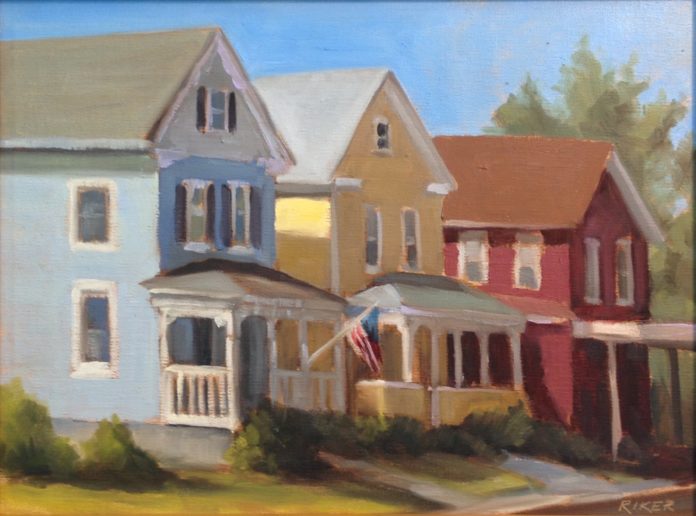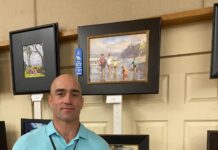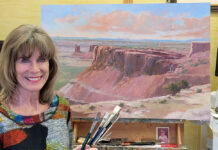Julie Riker loves the beach, and has been going there for years. But when she goes, she doesn’t paint the beach — she paints the beach town and the marshes. Why?
“I have painted the beach many times, and even a sand castle once,” says Riker. “But the beach … I think you need something more interesting than sand, water, and sky, unless the sky is really interesting. The marsh gives you a serpentine land mass that can draw you into the painting. And the town of Chincoteague is just so darn cute.”
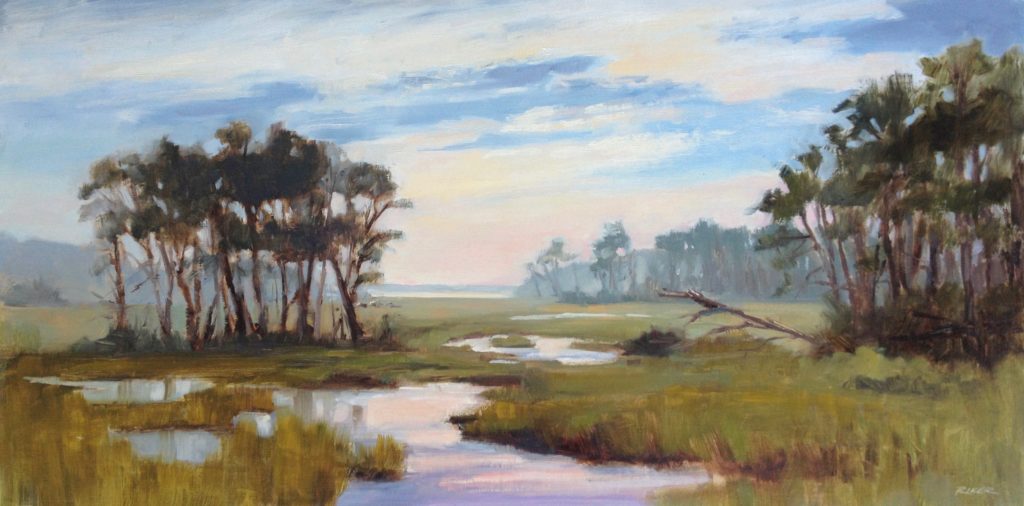
Her favorite place to paint is Chincoteague, the town, and the Chincoteague National Wildlife Refuge, located in Virginia south of Annapolis on the Delmarva Peninsula. “There’s the town, and then there’s the barrier island, which is the wildlife refuge,” confirms Riker. “There are no buildings in the refuge; it’s just very natural. It’s known for its wild horses that evidently came from a Spanish ship. They roam freely. And Chincoteague is a beach town, but it’s less built up, more like it might have been in the ’60s. They have a plein air event every year. I have been going for 20 years. I try to do that in combination with my vacation. The edges of the town are little more run-down and rural. There’s a lot to paint.”
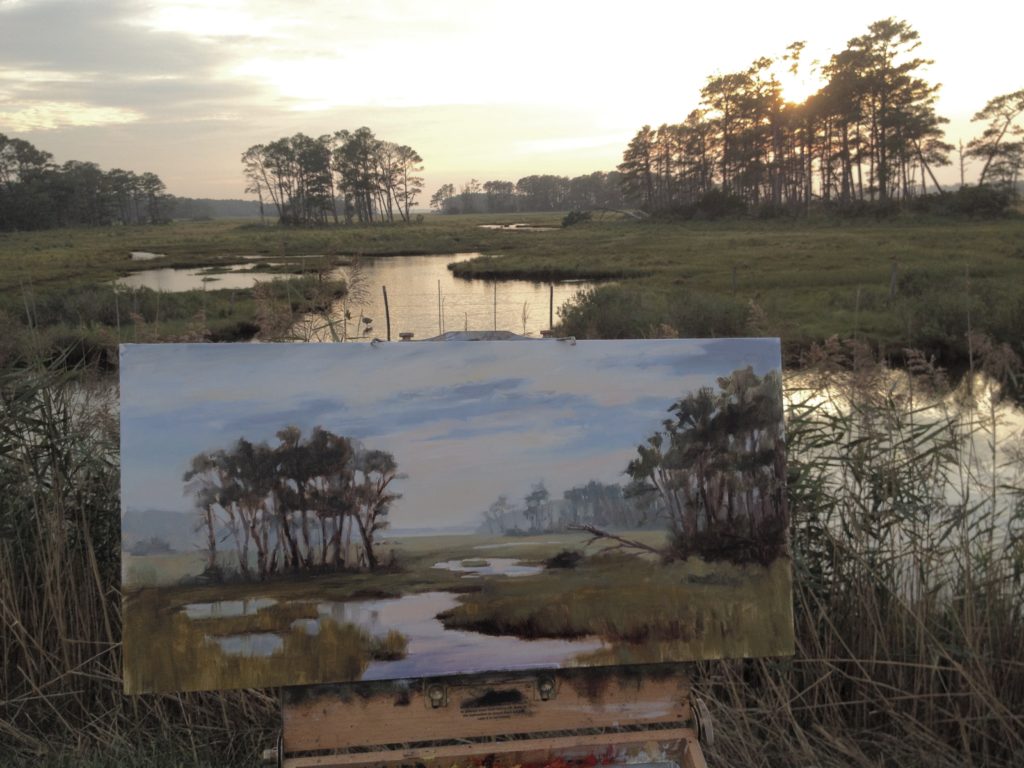
Riker lives about five hours away, and she goes to Chincoteague at least once a year, for the area’s plein air event. Often she visits another time outside of the busy season for the beach town, which runs from Memorial Day to Labor Day. She’s been going for years with her family, renting a house, getting a room at a hotel, or camping. “The air feels so clean there,” she enthuses. “Something feels like home about it. It’s very natural and not all commercialized. I’ve been going so often that I feel utterly comfortable there.”
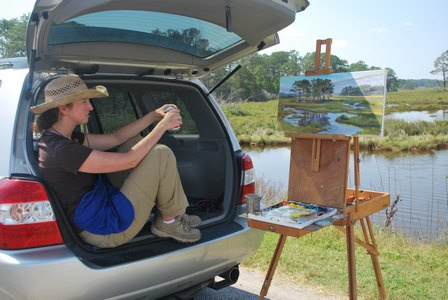

The Pennsylvania artist loves the natural landscape, but she can’t resist the town of Chincoteague. “I’m really interested in structures right now, and I like the negative spaces between structures, too,” says Riker. “They create a lot of nice contrasts, with definite light and shadow sides. Buildings have places where lights never get, so you get really good darks. I had a good background in drawing, and I guess that helps with painting buildings.
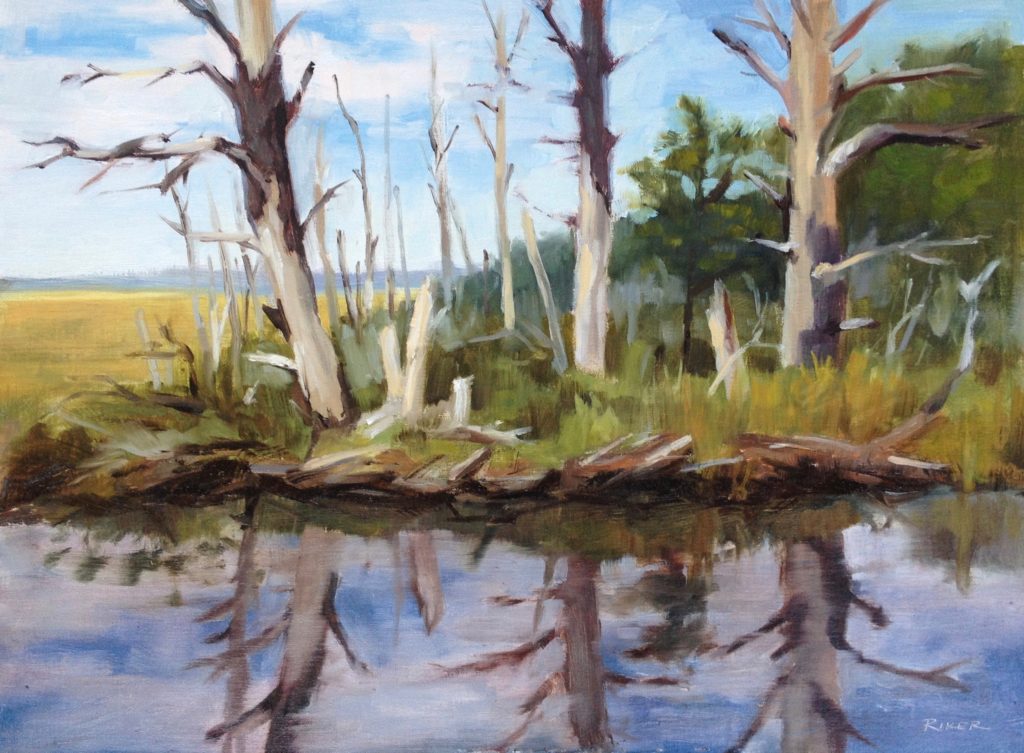
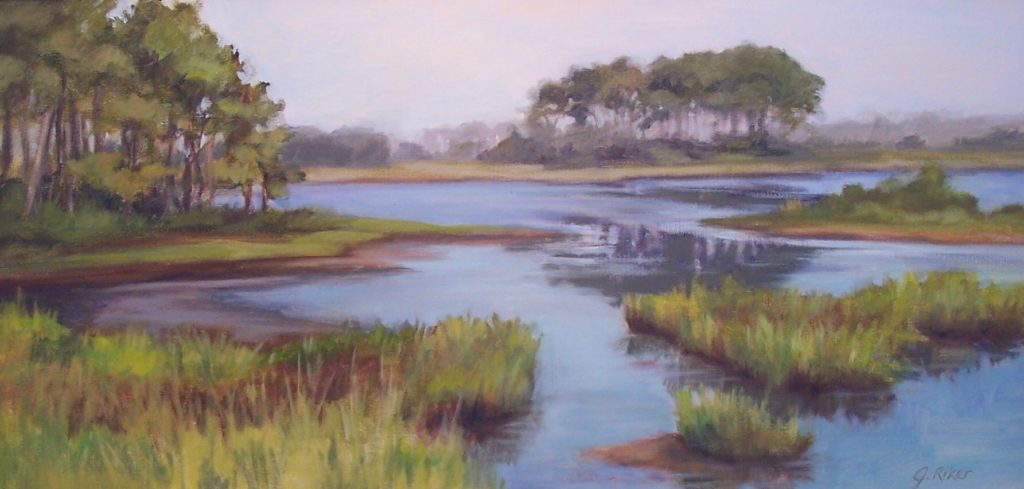
“But in Chincoteague, being a beach town, the houses are colorful. There are even pink ones. I painted ‘Three Houses on Main Street’ because they were so typical, a primary color setup. They look like they are in good shape, but the red one is kind of leaning. I didn’t draw it, but I did loosely sketch in the buildings. I was more looking at big color shapes. I drew those shapes rather than the outlines of things.”
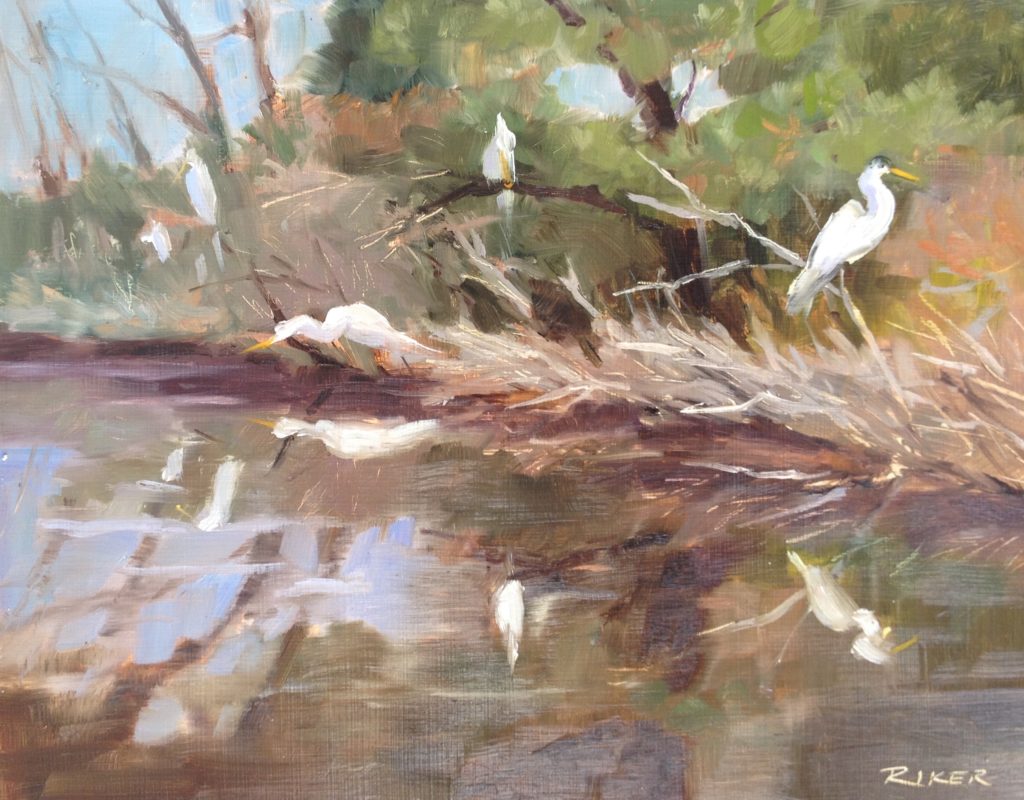
Riker’s process varies. Sometimes she tones her canvas on location and wipes out the lights and adds darks. Sometimes she works on a toned canvas. Even when painting a landscape, she is drawn to negative shapes, just like when she paints buildings. “I really like the patterning and design that you can get through trees,” she says. “And you need to think of it that way so it doesn’t get too repetitive.”

Riker finds plenty of wildlife to accentuate the wild landscape. A group of great egrets that congregated every morning on a creek proved irresistible one morning, and someday, she supposes she will paint the famous wild horses of Chincoteague.
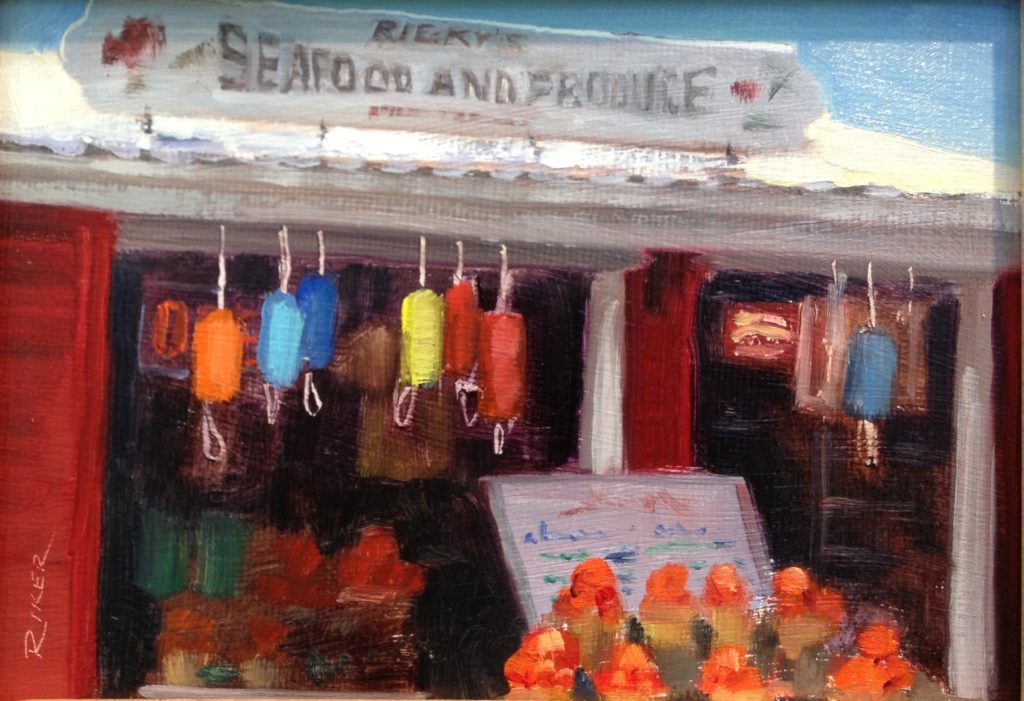
“On the road to the beach you can almost always see horses along the way somewhere,” says Riker. “Maybe I should do that next.”

